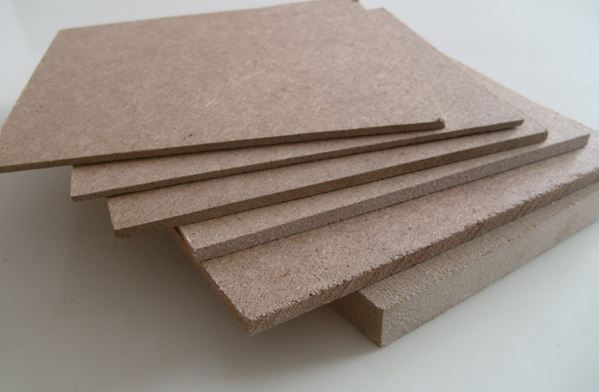What Is MDF?
Known as MDF, medium-density fibreboard is a synthetic substance that is available in flat sheets. This solid and consistent material is utilized in a variety of sectors, particularly carpentry and cabinet construction, because of its versatility.
MDF is often created from “waste” materials such as pulverized wood chips and sawdust, which are combined with glue and then exposed to severe pressure and high temperatures during production. This results in the recognizable board that may be found in cabinets, mattresses, speakers, and other such items. The use of MDF, which is often less expensive than plywood, is supposed to lower the costs of “wooden” items.
The strength qualities of MDF are significantly more consistent than those of wood, which is strongly unisotropic (meaning it has varied strength properties in various directions). Cut to size MDF may thus be considered isotropic, unlike wood. Since of this feature, it is less difficult to process than traditional wood products because there is no need to account for the orientation of the board. Apart from that, although MDF is significantly more vulnerable to moisture than most woods on its own, it may be primed and painted to make it more weather resistant.
Tips for CNC MDF Cutting
Tip #1: Speeds & Feeds
The most important features of CNC milling are, without a doubt, the speeds and feeds. The speed at which the spindle rotates and the feed rate at which the tool moves influence the surface quality of the finished product, the pace at which it is processed, the accumulation of heat, the length of tool life, and other factors.
If you use a high rotation speed of the spindle on MDF, it will yield better results in terms of surface polish than if you use a slower rotation speed. Due to the fact that a high rpm rate generates a lot of heat at the endmill, a greater feed rate is also necessary in order to avoid an accumulation of heat that may burn the MDF and cause the endmill to fail.
If you’re working with a hobbyist CNC mill or router, a high RPM setting might be a suitable starting point (say 75 percent -100 percent of the maximum speed of the machine). Then you’ll be searching for a feed rate that isn’t too slow (which will result in burned edges in your MDF and overheating of the endmill) or too rapid (which will result in burn edges in your MDF and overheating of the endmilland breaks your endmill).
Tip #2: Endmills
When deciding which endmills to utilize, two factors should be taken into consideration: the material and the geometry.
MATERIAL
Generally, when it comes to the material of endmills, the option is between HSS (high-speed steel) and carbide. However, some of the binders and chemicals used to join the wood particles during MDF manufacture may be highly abrasive, despite the fact that both materials can handle wood with ease. As a result, high-speed steel endmills may lose their sharpness more quickly than carbide endmills, which are usually tougher and wear less quickly.
GEOMETRY
When it comes to endmill geometry, the options are often limited to up-cutting, down-cutting, and straight flute. Let us examine the differences in further detail:
These endmills, which function similarly to a standard drill bit, direct the chips up and away from the workpiece while it is being cut. The effect of this might be tear-outs and splintering of the upper surface of the workpiece when dealing with MDF cutting, for example.
Tip #3: Cooling & Lubrication
As previously stated, milling MDF generates heat that has the potential to harm the material or the endmill. In addition, the accumulation of sawdust on the end mill and the material increases friction and hinders heat convection, all of which contribute to the build-up of heat on the end mill.
Because MDF is extremely sensitive to moisture, it is not recommended to use any form of liquid coolant during the milling process. It is possible that this will cause the MDF to bloat and disintegrate, as well as creating a mess and spreading MDF sawdust muck around the room.
Compressed air can be utilized to clean and cool the endmill’s travel path if it is readily accessible. Unwanted particles may be removed from the material and the endmill with a shop vacuum or even a modified household vacuum, which leaves the material clean and cool. It also reduces the amount of time spent cleaning up after an operation.
CNC Milling and Cut to Size MDF
Using computer-controlled machinery, CNC (computer numerical control) milling is the process of turning raw material into a finished product from scratch. When compared to “traditional” non-computer-controlled procedures, this results in a more productive, easier, and more precise cut. CNC milling is particularly popular in the carpentry and wood product industries because it produces a large volume of work, has excellent repeatability, and is less expensive than conventional carpentry.
The properties of MDF as described above make it the perfect candidate for a CNC milling material. It can be machined and processed with ease, is uniform and stable, and can be completed to a high degree of quality. That, coupled with the fact that it’s relatively cheap, is why many hobbyists turn to MDF base material for all sorts of creations: jigs and fixtures, mould making for vacuum forming, letter and sign engraving, and more!

